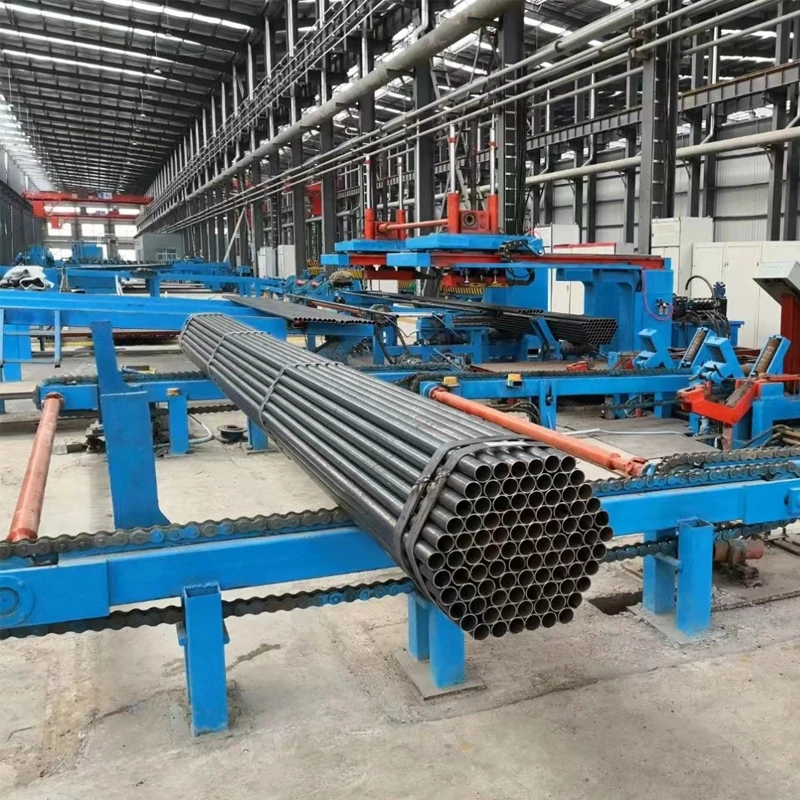Copper Pipe Production Equipment for Efficient Manufacturing Solutions
The Evolution and Importance of Copper Pipe Making Machines
Copper pipes are critical components in a wide range of applications, from plumbing and heating to refrigeration and electric wiring. The demand for copper pipes has consistently increased due to their excellent thermal and electrical conductivity, resistance to corrosion, and longevity. As the industrial landscape evolves, so does the technology used in the manufacturing of copper pipes. Enter the copper pipe making machine, an integral piece of equipment that has undergone significant advancements.
Understanding Copper Pipe Manufacturing
The manufacturing process of copper pipes involves several key steps melting, casting, extrusion, and finishing. Initially, copper is refined and melted at high temperatures. The molten copper is then cast into a shape that can be further processed. The next stage is extrusion, where the semi-finished copper products are forced through a die to form pipes of various diameters and lengths. Finally, the pipes undergo finishing processes such as annealing, cleaning, and inspection to ensure they meet industry standards.
Copper pipe making machines play a crucial role in automating and optimizing this manufacturing process. They enhance productivity, reduce labor costs, and improve the overall quality of the finished product.
Types of Copper Pipe Making Machines
Several types of machines are used in the production of copper pipes, each serving a distinct purpose
1. Melting Furnaces Essential for the initial stage of production, melting furnaces heat copper scrap or ingots, transforming them into molten form for casting.
2. Continuous Casting Machines These machines cast molten copper into a continuous shape, such as rods or plates, which can later be processed into pipes. This technique reduces waste and increases efficiency.
3. Extrusion Presses Extrusion presses are crucial for shaping the copper into pipes. They apply high pressure to push the copper through specially designed dies, creating the desired pipe dimensions.
copper pipe making machine

4. Annealing Ovens After the extrusion process, pipes are often brittle and hard. Annealing ovens heat the pipes to relieve stress and enhance flexibility.
5. Finishing and Inspection Machines These include machines for cutting pipes to specific lengths, cleaning, and testing for quality assurance. Automated inspection machines can detect defects in pipes, ensuring only the best quality reaches the market.
Advancements in Technology
Modern copper pipe making machines have integrated advanced technologies that significantly enhance production capabilities. Automation and robotics are at the forefront, streamlining operations and minimizing human intervention. This not only speeds up the manufacturing process but also reduces the likelihood of human error, ensuring uniform product quality.
Additionally, the introduction of Industry 4.0 concepts has brought about smart manufacturing systems. These systems utilize IoT (Internet of Things) technology to connect machines, allowing for real-time monitoring and data collection. Manufacturers can track production metrics, machine performance, and even predict maintenance needs, leading to reduced downtime and improved efficiency.
Environmental Considerations
In an era where sustainability is a priority, many manufacturers are turning to eco-friendly practices in their copper pipe production. Modern machines are designed to minimize energy consumption, and efficient recycling practices are implemented to reduce waste. For instance, scrap copper generated during the manufacturing process is often reintroduced into the production cycle, thereby conserving resources and reducing environmental impact.
Conclusion
The copper pipe making machine is a vital piece of technology that not only supports the manufacturing of high-quality copper pipes but also drives innovation in production processes. As industries continue to grow, the demand for efficient and sustainable manufacturing solutions will keep pushing the boundaries of what these machines can do. The future of copper pipes is bright, bolstered by advancements in technology and an emphasis on sustainability, ensuring they remain a critical resource in various applications for years to come.
-
High Frequency Straight Seam Welded Pipe Production Line-BzZhou Xinghua Machinery Equipment Manufacturing Co., LTD.|line pipe steel&welded gas pipeNewsJul.30,2025
-
High Frequency Straight Seam Welded Pipe Production Line-BzZhou Xinghua Machinery Equipment Manufacturing Co., LTD.|High Precision&Automated SolutionsNewsJul.30,2025
-
High Frequency Straight Seam Welded Pipe Production Line - BzZhou Xinghua Machinery Equipment Manufacturing Co., Ltd.NewsJul.30,2025
-
High Frequency Straight Seam Welded Pipe Production Line-BzZhou Xinghua Machinery Equipment Manufacturing Co., LTD.|Precision Welding, High EfficiencyNewsJul.30,2025
-
High Frequency Straight Seam Welded Pipe Production Line|BzZhou Xinghua|Precision Welding&EfficiencyNewsJul.30,2025
-
High Frequency Straight Seam Welded Pipe Production Line - BzZhou Xinghua|Precision Engineering&EfficiencyNewsJul.30,2025


